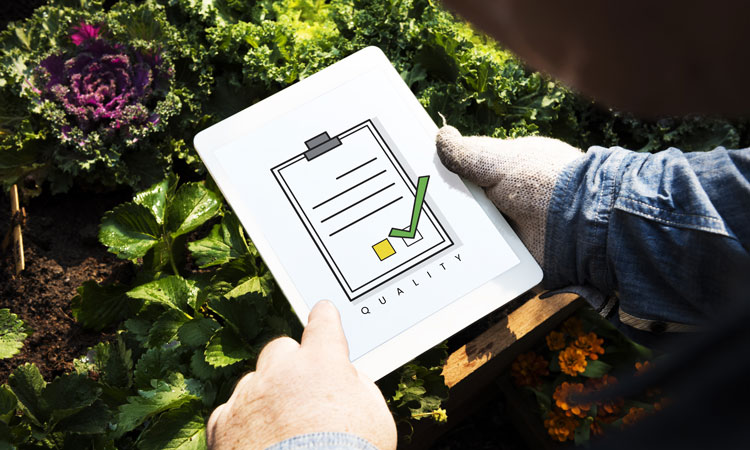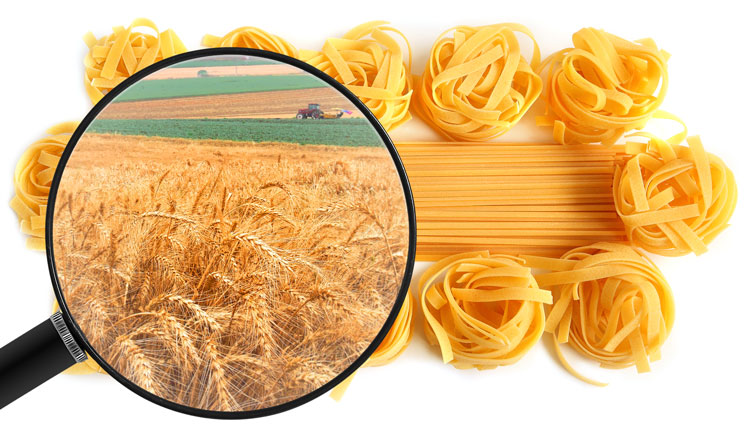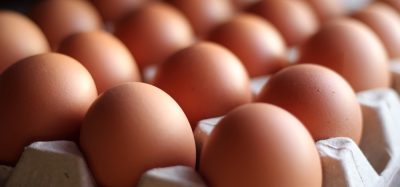The Heptagon of Food Quality
Posted: 24 February 2023 | Chiara Corbo (Smart AgriFood Observatory), Filippo Renga (Smart AgriFood Observatory) | No comments yet
One person’s idea of quality can be very different to another’s. Here, Filippo Renga and Chiara Corbo from Smart AgriFood Observatory share how best to capitalise on your brand’s unique qualities.


Defining the quality of a product is both a duty and a privilege that falls to the consumer. When standing in front of a shelf, whether physical or virtual, they express their own judgements (even at an unconscious level). In fact, the quality of any kind of product is defined by a series of parameters that can be perceived differently according to the individual, despite being objective parameters. This is largely due to the varying experiences and expectations of consumers.
Therefore, there are several aspects we could consider during the entire product selection process, and the parameter’s range – physical and non-physical – is further expanded when it comes to defining a product’s quality.
The seven pillars of food quality
The Heptagon of Food Quality is a model that was developed by the Smart AgriFood Observatory of Politecnico di Milano and Università degli Studi di Brescia to help guide groups of companies operating throughout the food chain (from raw materials producers to processing companies and suppliers of finished products, etc) towards an effective quality-oriented strategy.
This model was developed from the analysis of related specialist literature – the concept of food quality has been explored by numerous authors since the 1990s – and has already been used by various companies in several workshops within the community of the Observatory. They include many of the main agrifood Italian brands.
Why Barry Callebaut’s model for sustainable growth is one the entire food industry should follow
Primarily, the method covers seven directions that the food chain stakeholders can follow to define their own quality strategy. These seven avenues can be divided into product attributes and process attributes.
Four avenues relate to product attributes:
- Safety – refers to quality characteristics related to consumer safety, such as the quantity of residues in agrochemicals, veterinary medicines, or food additives in the product
- Health – includes characteristics related to the product’s nutritional and health properties, such as calories, absence of allergens (gluten, lactose, etc), presence of specific functional characteristics (eg, food products enriched with probiotics, etc)
- Organoleptic sphere – refers to all the sensory aspects connected to the consumer’s personal preferences – such as taste, aroma, texture on the palate, etc – and the aesthetic appearance (size, colour, freshness, packaging, consistency to the touch, etc
- Economic factors, such as brand, price, sales channel (eg, convenience store, superstore, specialty store).
Three avenues relate to process attributes:
- Origin – includes elements that identify the production site and links with the territory, such as the presence of a high-quality label (eg, DOP and IGP)
- Production method – composed of characteristics originating from the production methods and processes (traditional, organic, biodynamic, etc)
- Ethical sphere – embracing all the elements related to relevant issues from an ethical point of view, such as the focus on environmental sustainability (through the reduction of waste, water consumption, CO2, etc) and social sustainability (respect for workers, cultural heritage), as well as respect for animal rights and welfare.
Aligning your quality theme
These seven avenues are then subdivided further. Each company must analyse and define which measures to take, to best promote the aspects on which it wants to focus to differentiate its product.
It is important to note that the objective of the model is not to pass judgement on “what is good / what is not good”, but to provide companies with a tool to establish their own idea of strategic quality.


A food company may aim to focus on a quality strategy that emphasises a specific or local origin
Several companies have already experimented the Heptagon of Food Quality and found improved efficiency in pursuing and reaping the benefits of a true strategy entirely dedicated to food quality. The model also demonstrated effectiveness in aligning several roles within a food company toward the concept of food quality. Is the concept of quality for a specific product perceived the same way by a company’s director, its marketing manager, the supply chain manager and the quality director? To ensure that all the company’s departments and employees are working towards the same quality objectives, it is necessary that they are united on the same concept of quality.
Moreover, the Heptagon model has supported companies in the coordination of their quality strategy with key partners in their supply chains. For example, if a food company aims to focus on a quality strategy that emphasises the local origin of the product and its raw materials, ensuring that retailers are aligned on this concept will be crucial to achieving its objectives. A commercial agreement with a retailer who is deeply focused on the promotion of local food, for example, would be beneficial. The Heptagon of Quality is very helpful in reaching this alignment.
Innovation at the service of food quality
Food chain companies are increasingly using technology to improve the quality of their products, especially with the aim of enhancing a product’s origin and food safety, as well as emphasising production methods.
These aspects are increasingly revered by consumers: for instance, as the Smart AgriFood Observatory’s 2021 research identified, in a sample of more than 1,000 consumers, information concerning processing methods, origin and ethical aspects is often sought by customers, who reward companies that provide such information with their purchases. This is why companies are investing in food traceability and, consequently, in every related enabling technology. Using advanced barcodes, technologies for big data analysis, internet of things and blockchain, producers are now able to trace and provide a series of information to consumers, offering more information about the product they are purchasing and ensuring a high degree of transparency.
Despite the increased use of technologies and media attention, however, the benefits arising from digital innovations in support of quality are largely yet to be discovered.
It is clear that we must not underestimate the concept of food quality; each company should carefully define its own concept and, if needed, understand how best to evolve it, communicating clearly with its employees or with supply chain partners.
About the authors


He is Professor in charge of Business Organization at Politecnico di Milano and coordinator of the Paths of Excellence at the Cremona Campus of the same University, where he is also involved in the creation of the new Master of Science in Agricultural Engineering, officially started in September 2021.
He is Co-founder of five startups, with a turnover of more than €35 million to date, and owner of a milking farm with more than 500 cows (family business).


Smart AgriFood Observatory
The Smart AgriFood Observatory of Politecnico di Milano and University of Brescia is a reference point in Italy for digital innovation in the agricultural and food supply chain. The aim of the observatory is to convey the results of research to decision makers – by promoting occasions for stakeholders to meet and discuss in order to foster dialogue and innovation – and to generate culture, by spreading the information and the knowledge about digital innovation in the supply chain.
Related topics
Clean Label, Free From, Ingredients, Product Development, Research & development, retail, Supply chain
Related organisations
Politecnico di Milano, Smart AgriFood Observatory, Università degli Studi di Brescia









